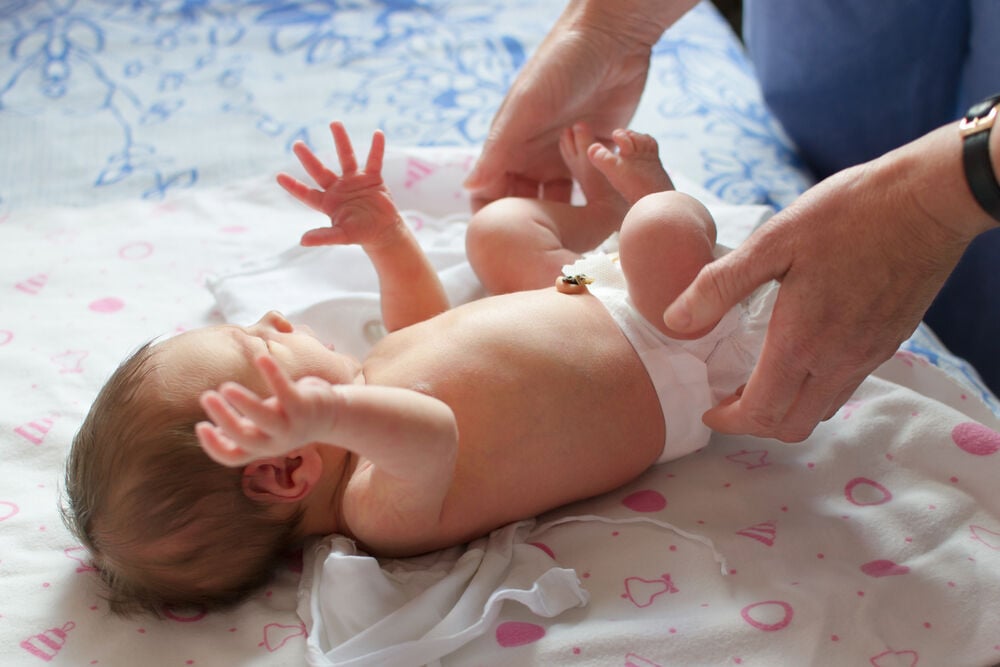-
Tracking cycle
-
Getting pregnant
-
Pregnancy
-
Help Center
-
Flo for Partners
-
Anonymous Mode
-
Flo app reviews
-
Flo Premium New
-
Secret Chats New
-
Symptom Checker New
-
Your cycle
-
Health 360°
-
Getting pregnant
-
Pregnancy
-
Being a mom
-
LGBTQ+
-
Quizzes
-
Ovulation calculator
-
hCG calculator
-
Pregnancy test calculator
-
Menstrual cycle calculator
-
Period calculator
-
Implantation calculator
-
Pregnancy weeks to months calculator
-
Pregnancy due date calculator
-
IVF and FET due date calculator
-
Due date calculator by ultrasound
-
Medical Affairs
-
Science & Research
-
Pass It On Project New
-
Privacy Portal
-
Press Center
-
Flo Accuracy
-
Careers
-
Contact Us
Moro Reflex: Everything You Need to Know


Every piece of content at Flo Health adheres to the highest editorial standards for language, style, and medical accuracy. To learn what we do to deliver the best health and lifestyle insights to you, check out our content review principles.
What is Moro reflex?
As a new mom, you probably have hundreds of questions about your newborn. You’re learning all about their development milestones, and hearing all sorts of technical terms that doctors seem to describe as common knowledge can leave you feeling anxious and unsure. One such term is the Moro reflex, so let’s start with a Moro reflex definition.
The Moro reflex is a normal, involuntary reaction that newborns and infants have when they’re startled. When the Moro reflex is triggered by rapidly lowering a baby in a supine position by approximately 4–8 inches, the baby will suddenly extend his or her arms out to the side, as if they’re free-falling. A few seconds later, the arms will naturally come back down and in towards the body.
The Moro reflex typically appears within the first few days after birth, though it can take longer if your baby was born prematurely. The Moro reflex is considered a “primitive” reflex because it happens instinctually, without thought. Your baby’s central nervous system is programmed to react this way when he or she is startled; the Moro reflex has even been observed in preterm infants as early as 25 weeks.
How long does the Moro reflex last?
In normal infant development, the Moro reflex disappears around 5–6 months old. For infants with serious neurological or motor-control conditions like cerebral palsy, the Moro reflex might never go away, even into adulthood.

In the first few days after your baby is born, your health care provider will perform several simple tests and examinations to check his or her development. They will perform a Moro reflex test to check that your baby’s reflex is active.
With your baby lying down or held in a horizontal position, your doctor might elevate your baby’s head slightly above their body and then gently let it drop into their hand. If the Moro reflex is triggered, your baby’s arms will extend (at the moment they feel like they’re falling) and then slowly curl back in toward their body.
Other tests for triggering the Moro reflex include tapping the belly or tapping the surface next to their head if they’re lying down. To ensure accuracy, your doctor will perform a Moro reflex test when your baby is awake, their hands are open or relaxed, and they’re not crying or agitated.
If the reflex is not triggered, your doctor may want to perform additional tests to evaluate their development. If your baby was born prematurely, their reflex might not be present in the first few days after birth. In rare cases, an absent or poor Moro reflex response could be a sign of Down syndrome.
Take a quiz
Find out what you can do with our Health Assistant
How to calm a baby with the Moro reflex?
The Moro reflex only happens in response to an event that your baby finds startling. Once the baby realizes that they are not in danger, their arms will come back inward and they’ll relax. After their Moro reflex has been triggered, you can comfort your baby in the same way you normally would — cradling them, soothing them with your voice, or bringing them into a dark and quiet room.
You can also trigger the reflex when putting your baby to bed, which will wake them up. If your baby falls asleep in your arms, here are some tips to put your baby to bed without startling them:
- Lower your baby into their bassinet or crib horizontally, to avoid tilting the head backwards
- Keep your baby as close to you as possible as you lower them down
- If the reflex gets triggered during sleep and they wake themselves up, try swaddling your baby before bed
A good night's rest is as important for you as it is for your baby, so keep your baby’s sleeping area comfortable, quiet, and dark so that they don’t easily startle.
When is it time to call the doctor?
The Moro reflex is a normal, involuntary response in newborns and infants. However, you should speak with your doctor if you notice that your baby still demonstrates the Moro reflex past the age of six months, or you suspect that their reflex is triggered more often than normal. They may perform different tests to evaluate your baby’s physical and mental development.


Hey, I'm Anique
I started using Flo app to track my period and ovulation because we wanted to have a baby.


The Flo app helped me learn about my body and spot ovulation signs during our conception journey.


I vividly
remember the day
that we switched
Flo into
Pregnancy Mode — it was
such a special
moment.
Real stories, real results
Learn how the Flo app became an amazing cheerleader for us on our conception journey.




